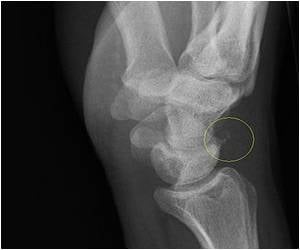Researchers will be embarking on a novel study which will seek to improve the health and mobility of those suffering from the common complaint of walking on marbles associated with

Mostly, people have thought that this was due to walking on foot joints that are affected by the RA.
The Health Sciences' FeeTURA study however, developed new ways of assessing the forefeet through the use of diagnostic ultrasound and magnetic resonance imaging techniques.
From this work, the University of Southampton researchers discovered that some of the swellings and associated feeling of 'walking on marbles' were related to inflamed bursae (a fluid-filled sac usually found in areas subject to friction) that had developed underneath the forefoot joints. These inflamed bursae were rarely detected by clinical examination.
The exact cause of the inflamed bursae is not known and a cure is yet to be found, however, the team is now looking at identifying inflammatory and mechanical markers to find the best ways of treating this complication in people suffering with RA.
They will evaluate foot health treatments, such as targeted steroid injections, as well as medical management through the use of new drugs (called biologics).
Advertisement
Participants who were assessed at the NIHR Wellcome Trust Clinical Research Facility (WTCRF), based at Southampton General Hospital, returned for re-assessment in the second stage of the study which discovered the changes that had occurred in the condition.
Advertisement
Led by senior lecturer for Advanced Clinical and Expert Practice, Dr Catherine Bowen, this new stage of the treatment study will be carried out by clinical academic researcher, Lindsey Hooper, who recently won a prestigious special award from Wessex HIEC for the previously completed MRI work.
"Although more common in the UK than leukaemia and multiple sclerosis, awareness of the severity of rheumatoid arthritis is limited," Dr Bowen said.
"Our linked study aims to significantly improve the lives of those affected by the condition in their forefeet, reducing the severity of the symptoms including pain, inflammation, poor sleep, fatigue and depression, and therefore helping improve their mobility and wellbeing," she added.
Source-ANI














